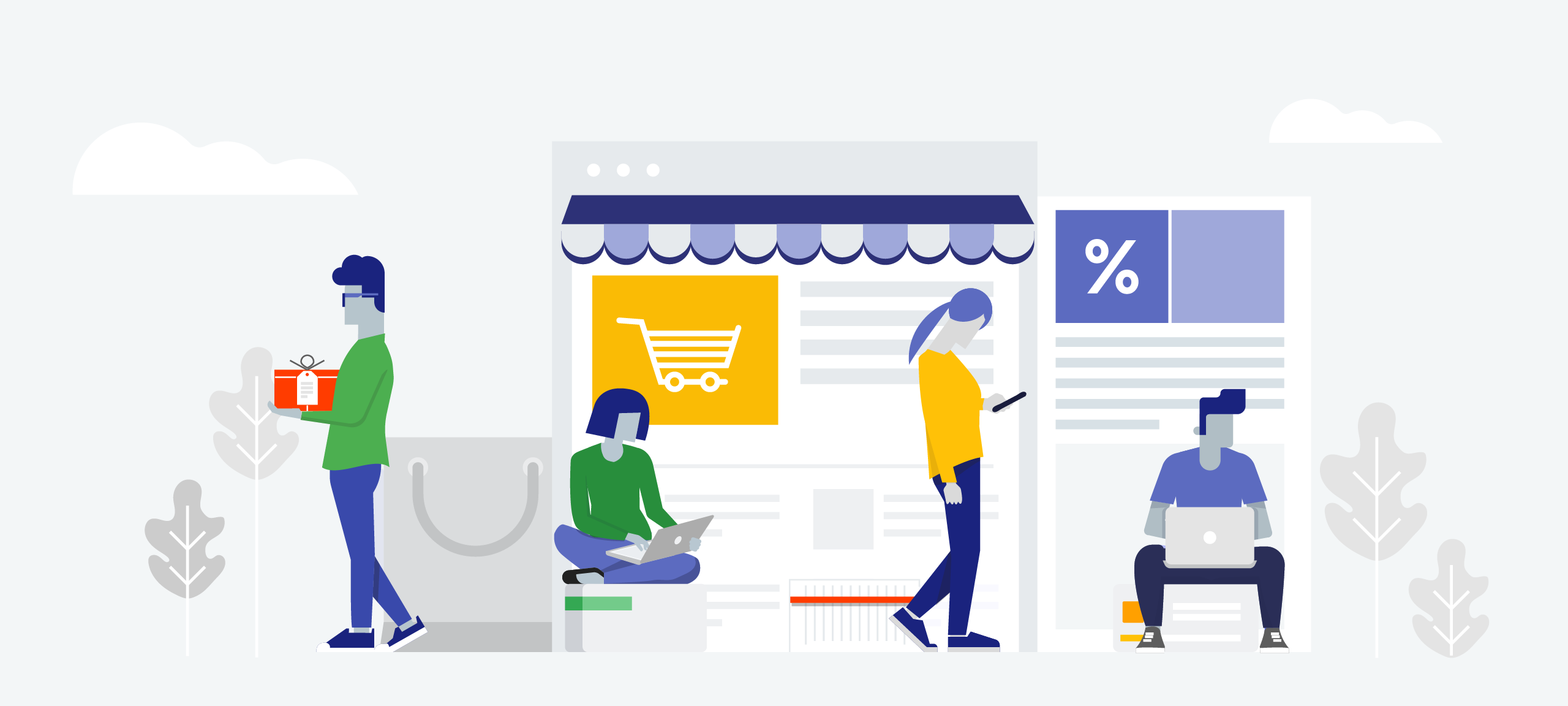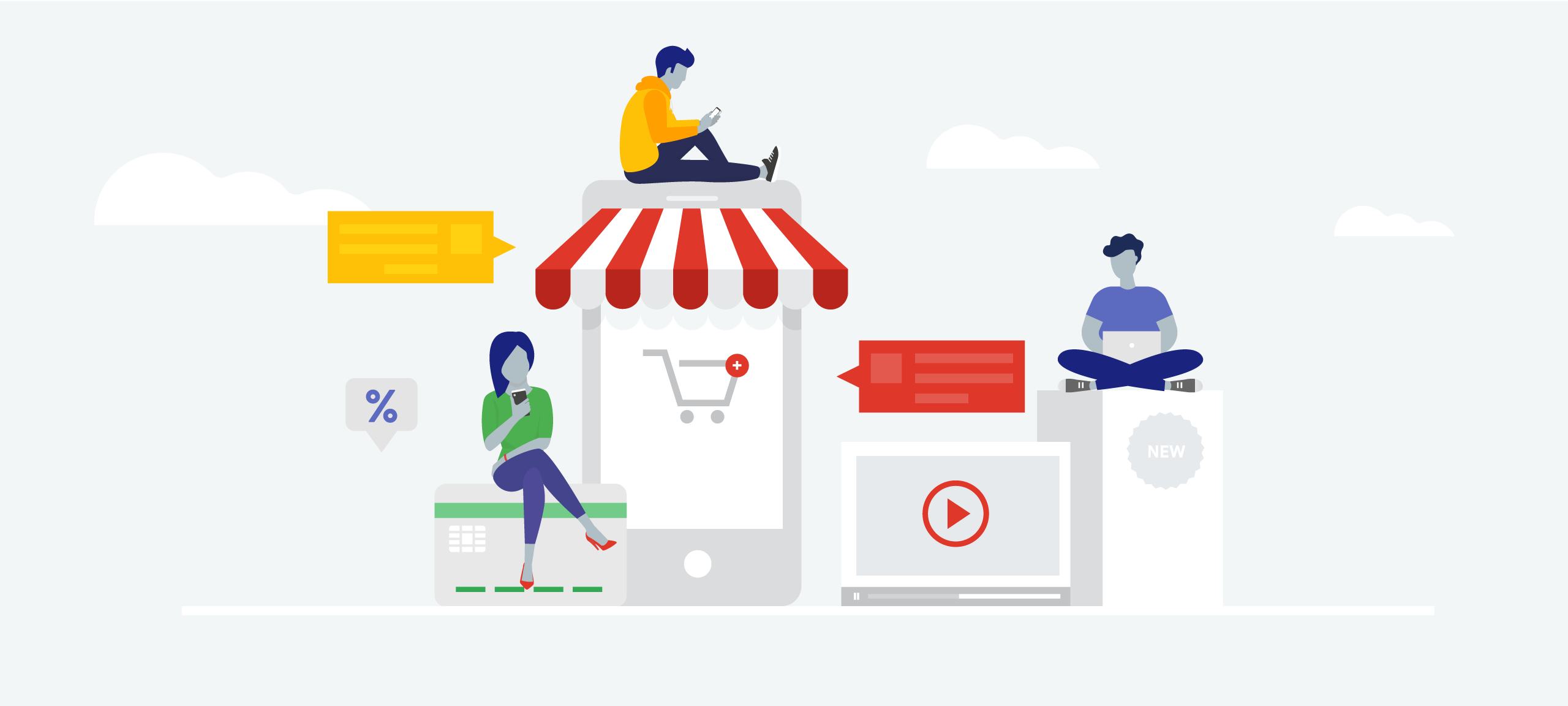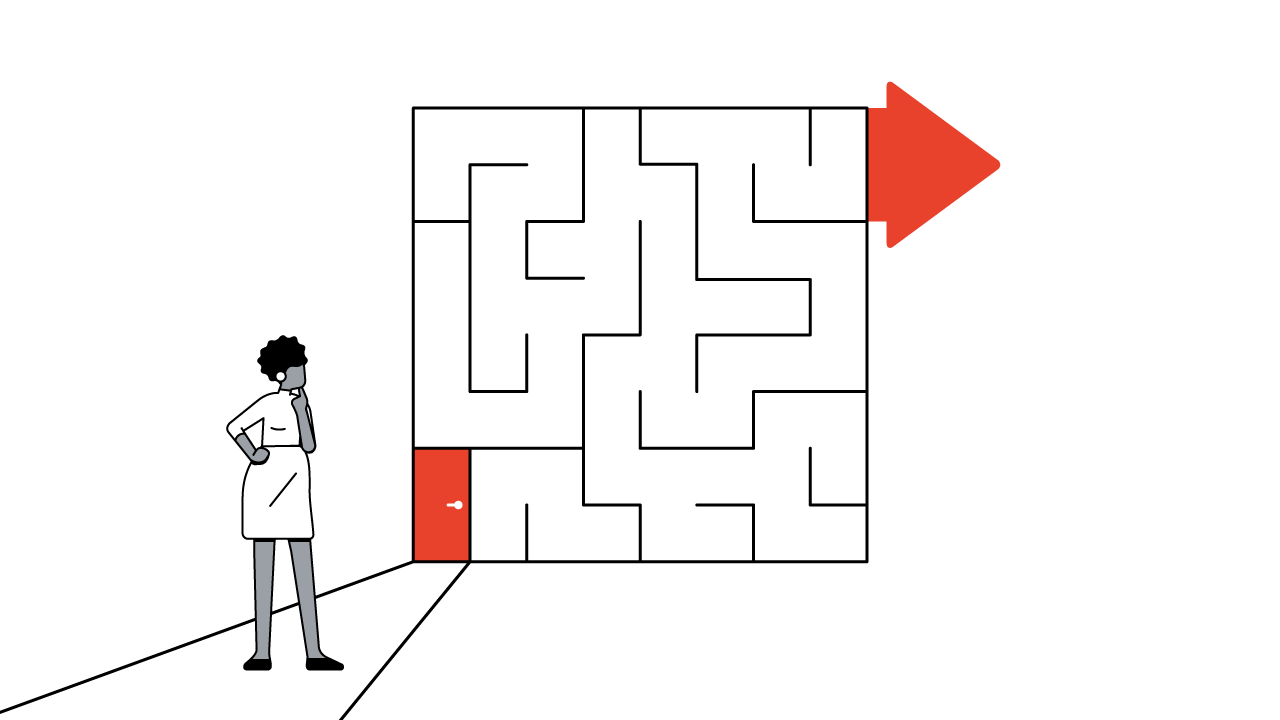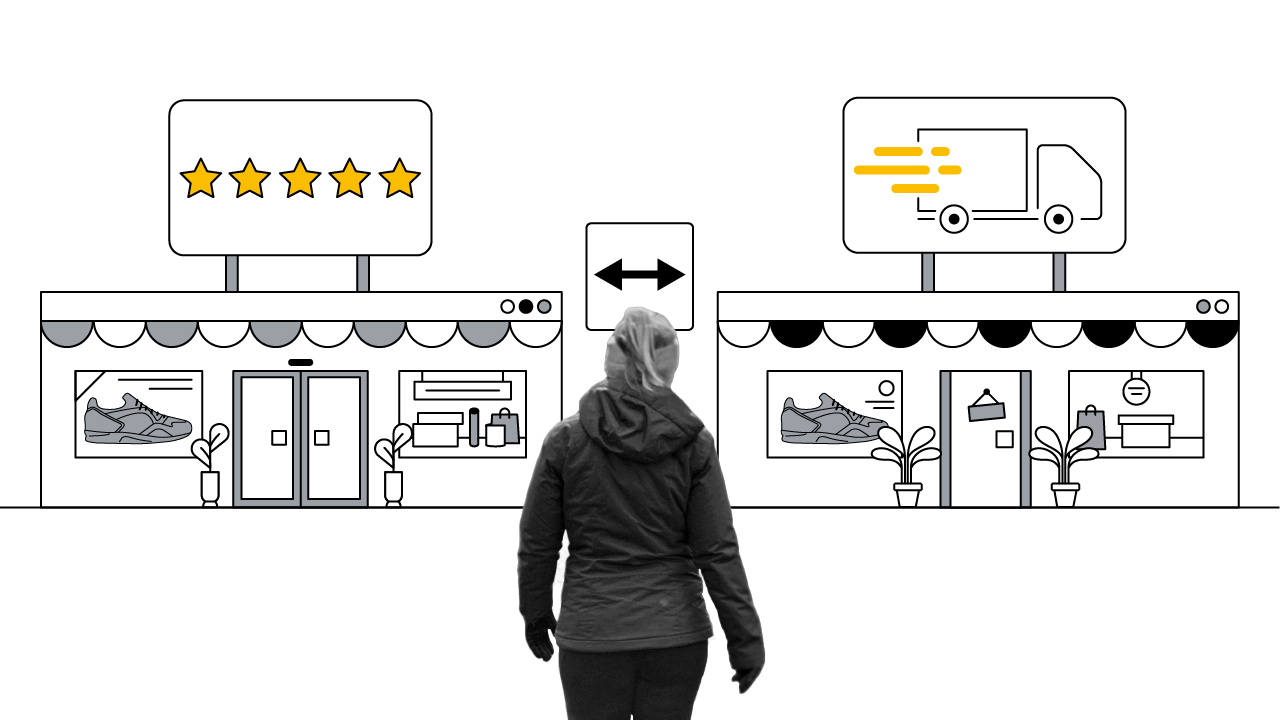New data from a Google CEE and IPSOS study reveals the complexities of the modern path to purchase. The traditional linear marketing funnel no longer applies to today’s shoppers and consumers in each country have their own particular shopping behaviours. Dive into the insights and complexities of the modern day Ukrainian path to purchase to get closer to consumers.
The IPSOS and Google CEE1 surveyed 4,500 consumers across four categories of products and services — notebooks, TVs, mobile phone contracts, and clothes and footwear. The study focused on 16+ year old Internet users in Poland, Ukraine, Greece, and the Czech Republic who had made a recent offline or online purchase.
The study revealed a range of consumer traits that were particular to each country. Unlike consumers in Poland, Greece or the Czech Republic, shoppers in Ukraine are more likely to consider a range of brands. They don’t use touchpoints for inspiration, but for specs and reviews from other consumers. And when offline shopping for clothes they are more likely to use their smartphones for research.
Brand loyalty
Consumers are not loyal to brands, they are loyal to making their own lives easier. This adage rings particularly true for consumers in Ukraine. Shoppers in Ukraine are more likely than their regional neighbours to consider a range of brands at the beginning of their path to purchase.

Hard data
Ukrainian consumers want the facts. When researching online and offline they expect to find product specs and user reviews or opinions. Unlike their regional neighbours, they are not looking to be inspired. This means brands need to be as helpful as they can be with detailed information about their products or services.

Thrifty spenders
Ukrainians paid slightly less than their regional neighbours, especially when it came to notebooks. When making an online purchase, they are more likely to prefer to pay at the store or on delivery rather than in advance.
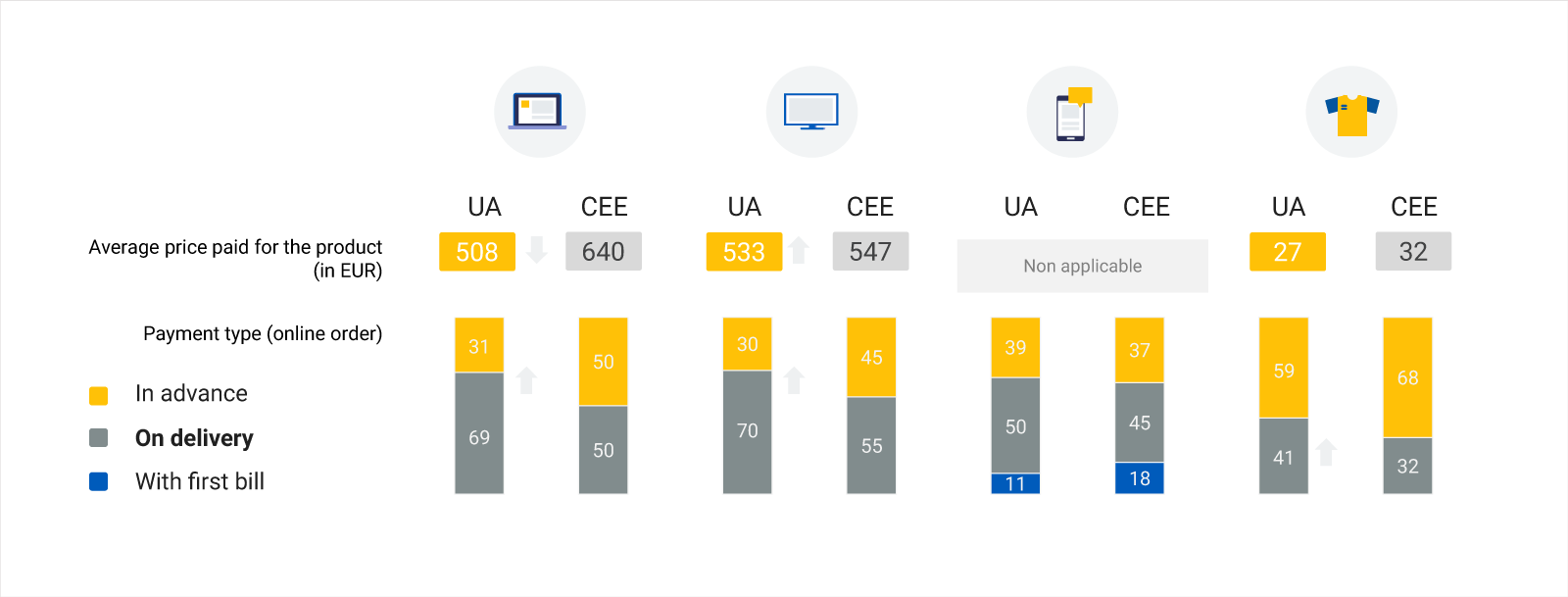
Offline and online touchpoints
Mobile phones are increasingly becoming the driving force behind offline purchases.2 Ukrainian shoppers use their smartphones to research and find information about products. They move seamlessly between the online and offline worlds and are more likely to research on their phones while in a brick-and-mortar store — this is particularly true when they’re shopping for clothes or footwear.
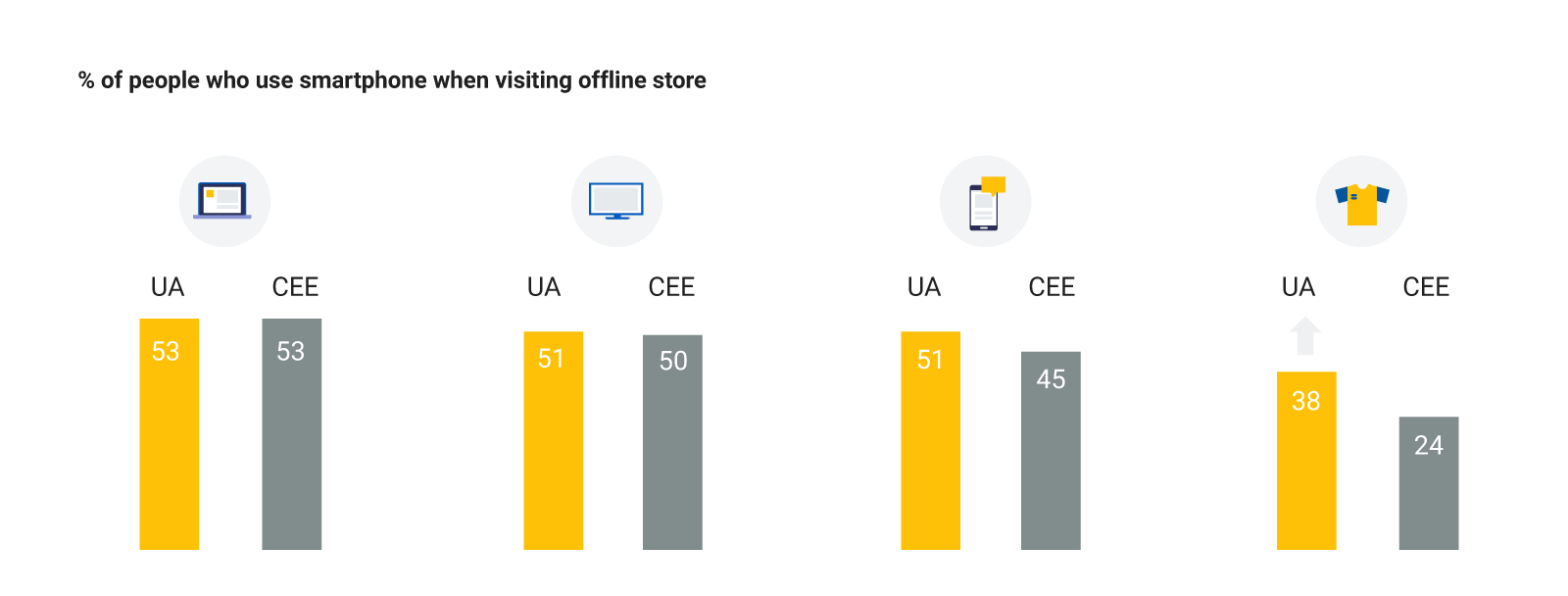
Shopping behaviour per category
In general, Ukrainians are thrifty shoppers who consider a range of brands at the beginning of their path to purchase. This provides opportunities for challenger brands in the region to take a share of the market.
The specific behaviours and traits vary depending on the type of product or service that Ukrainian consumers are researching and shopping for. Here are some of the study’s key takeaways for each of the products and services.
Notebook takeaways
- A third of Ukrainian shoppers didn’t consider any brand at the beginning of the path to purchase. This provides brands with an opportunity to influence these shoppers.
- They are quite spontaneous. As many as a fifth of Notebook shoppers completed their purchase within one day.
- Offline isn’t dead and shouldn’t be underestimated. 72% of shoppers used offline touchpoints (despite the category’s inclination toward online).
- They move seamlessly between the offline and online worlds. Half of the shoppers used mobiles to research products while visiting offline stores.
- Ukrainian shoppers value interacting with shop assistants. Brands could invest in an online equivalent with virtual assistants or video campaigns.
- Despite the global shift to mobile, shoppers in the Ukraine are not in love with local mobile experiences. Citing the inconvenience of typing on smaller screens and comparing products and services, Ukrainian consumers tend to visit store and manufacturer websites on desktop rather than mobile. This suggests an opportunity for brands to improve the country’s mobile experience.
TV takeaways
- A quarter of TV shoppers didn’t have any single brand in mind at the beginning of their path to purchase, suggesting there is room to influence consumers.
- They are spontaneous. As many as a quarter of purchasers completed their path to purchase within one day.
- Half of shoppers used mobile devices to research while visiting offline stores, suggesting an opportunity to create online incentives like augmented reality apps with product specs and reviews.
Mobile phone contract takeaways
- A fifth of consumers didn’t have any single brand in mind at the beginning of the path to purchase when choosing a mobile provider.
- Almost a third of shoppers completed their path-to-purchase process within one day.
- 83% of shoppers used offline touchpoints (despite the category’s online inclination) and a half of consumers used mobiles for research while visiting offline stores.
Clothes and footwear takeaways
- 59% of the clothes and footwear shoppers did not consider any one single brand at the beginning of the path to purchase.
- As many as half of the consumers completed their path to purchase process within one day.
- Almost two fifths of shoppers used mobiles for research while visiting offline stores.
- More shoppers used desktop than mobile when visiting price comparison and store websites.
